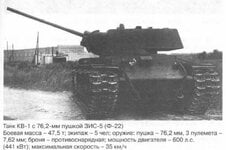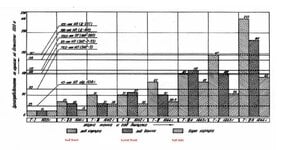Elan Vital
Airman 1st Class
- 160
- Aug 24, 2024
P.M. Knight answers some of this in his books on early Cruisers. The powers that be expected the battle tempo to be sufficiently slow to use the tanks for some time, then send them back for overhaul/major maintenance. So specific durability/reliability figures were not required. Admittedly, my understanding is that a lot of WW2 belligerants thought the same as well at the time.I would agree, the point is they were making too many different types. With the Matilda II, Valentine, and Churchill all offering the same gun, roughly the same speed and around the same armor at the same time. Only real difference was the amount ammo carried and the extra machine gun in the Churchill and that increase in "fighting power" was not great (more in the minds of the designers/committee) They got around to increasing the gun and armor of the Churchill..........eventually.
Using the infantry tanks as ersatz cruisers is really admitting they had screwed up the cruiser tank implementation in spectacular fashion. We can argue about the doctrine, specification but the supplied tanks didn't have the reliability to perform the mission. Sending the Cruisers into the enemy rear areas to force him to retreat doesn't work well when most of your tanks are going to breakdown before they shoot up very much rear area "stuff" (supply dumps, head quarters, heavy artillery and so on). Not much enemy AT gun or counter attack by enemy tanks needed. British Cruiser tanks were not capable of staying running in large numbers over 200-300 miles of movement.
My understanding is that it is only in 1942-43 that the British set a specific value, 3000 mile life for Cruisers and 2000 mile life for Churchills before overhaul, without failure/replacement of a major assembly. Cromwell was the first Cruiser to meet this, A30 and Comet met it as well, late Churchills met it, Black Prince was still in development but it was apparent it would have met the requirement. Late Covenanter was close, late Crusader sorta was getting there, but initially it had a pretty mediocre life of 1000-1500 miles with many systemic issues.
As for 2 pdr, I also agree that having the normal full suite of full caliber ammo almost from the start would have helped a lot. The French for example started experimental work/trials on AP ammo for their casemate guns and the 47mm tank gun in 1932 IIRC, starting with uncapped AP shot (still better against thick plate than the atrocious 2pdr APHE which had an excessively large cavity), and entering service with APBC with hardened tip (APC for tank guns). Admittedly, old APHE or uncapped ammo was actually quite common among low caliber gun users (Czechoslovakia, Sweden, Germany...)




